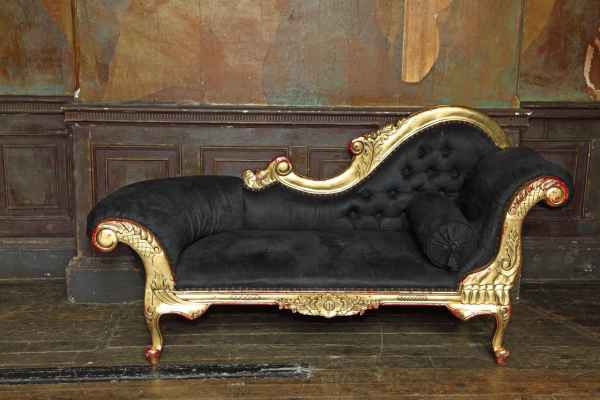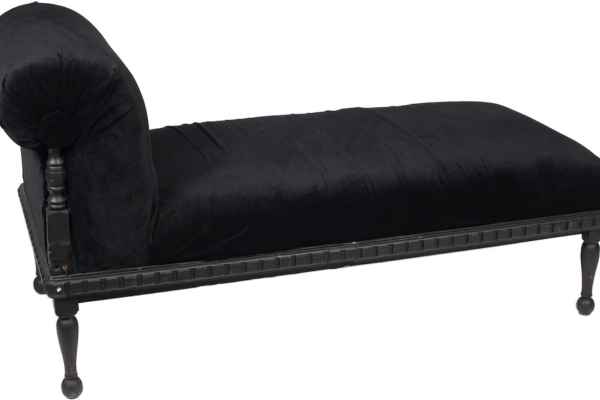Reupholstering a chaise lounge can be a rewarding DIY project that breathes new life into an old piece of furniture. Whether you’re looking to update the style, repair worn fabric, or simply change the color, learning how to reupholster a chaise couch can save money and provide a sense of accomplishment. This guide will walk you through the process step-by-step, ensuring your project is successful and enjoyable.
Gathering Materials

Before you start reupholstering a chaise lounge, it’s essential to gather all the necessary materials. You’ll need upholstery, a staple gun, staples, upholstery foam, batting, scissors, a screwdriver, pliers, and a seam ripper. Additionally, having a measuring tape and a marker on hand will help you take accurate measurements and mark your fabric. Choosing the right fabric is crucial; consider durability, color, and pattern to ensure it complements your existing decor.
Preparing Your Workspace

Creating an organized and spacious workspace is vital for a smooth reupholstering process. Find a well-lit area with enough room to maneuver your chaise couch and spread out your materials. Lay down a drop cloth or old sheet to protect your floors from dust and debris. Keep your tools within reach and ensure you have a comfortable working height to avoid strain. Having a tidy workspace will make the process more efficient and enjoyable.
Removing The Old Upholstery

The first step in reupholstering a chaise couch is to remove the old upholstery. Start by flipping the lounge over and using a screwdriver to remove any screws holding the in place. Carefully pull out the staples or tacks using pliers, taking care not to damage the frame. As you remove the old, pay attention to how it was attached and the order in which the pieces were removed; this will help you when it’s time to apply the new fabric. Once all the old upholstery is removed, inspect the frame for any repairs that may be needed before proceeding.
Inspecting The Frame And Padding

Before you begin attaching new fabric, it’s crucial to inspect the frame and padding of your lounge. Carefully examine the wooden frame for any signs of damage, such as cracks or loose joints. If you find any issues, repair them using wood glue and clamps or screws to ensure the frame is sturdy. Next, check the padding and springs. If the padding is worn out or the springs are sagging, replace them to provide a comfortable seating surface. Adding new upholstery foam or batting can significantly enhance the comfort and appearance of your chaise couch.
Measuring And Cutting New Fabric

Accurate measurements are key to a successful reupholstery project. Begin by measuring the various parts of your lounge, including the seat, backrest, and arms. Add a few extra inches to each measurement to account for seam allowances and tucking. Once you have your measurements, lay the new fabric on a flat surface and mark the dimensions with a fabric marker. Use sharp scissors to cut the pieces, ensuring clean edges. It’s a good idea to cut all the pieces before you start attaching them, so you have everything ready when needed.
Attaching The New Fabric

With your fabric pieces cut, you can begin attaching them to the chaise lounge. Start with the largest sections, such as the seat and backrest. Lay the fabric over the padding, making sure it is centered and straight. Use a staple gun to secure the fabric, starting at the center and working your way out to the edges. Pull the taut as you go to avoid wrinkles and sagging. Continue this process for all sections of the chaise couch, ensuring that the is smooth and evenly distributed. Trim any excess fabric as needed, and double-check that all staples are secure.
Dealing With Complex Areas

Reupholstering a lounge involves dealing with complex areas such as corners, curves, and tufted sections. For corners, fold the fabric neatly and staple it in place, making sure there are no bulky folds. When working with curves, cut small notches in the to help it fit smoothly around the contours of the chaise couch. For tufted sections, use a tufting needle to pull the fabric through and secure it with buttons or ties, creating a professional look. Take your time with these areas, as attention to detail will make a significant difference in the final appearance of your reupholstered chaise couch.
Sewing Techniques

Using the right sewing techniques is crucial for creating a polished and durable reupholstery job. When joining fabric pieces, employ strong seams like the double stitch or the zigzag stitch to enhance durability. If your chaise couch has piping or welting, use a zipper foot on your sewing machine to stitch close to the edge, giving a clean, professional look. For areas that require additional reinforcement, such as corners or tufted sections, consider using hand stitching for precise control. Proper sewing techniques ensure that the is securely attached and can withstand daily use.
Adding Finishing Touches
The finishing touches are what truly elevate your reupholstered chaise couch. Once all the main fabric pieces are attached, add decorative elements like trim, buttons, or piping to enhance the overall appearance. Use a hot glue gun or upholstery tacks to secure these details in place. If your chaise lounge has buttons for tufting, make sure they are evenly spaced and securely fastened. Adding a dust cover to the bottom of the chaise couch is another finishing touch that helps to protect the fabric and gives the piece a clean, completed look.
Final Inspection
After completing the reupholstery process, conduct a thorough final inspection to ensure everything is in place. Check all seams, staples, and stitching for security, and make any necessary adjustments. Sit on the lounge to test for comfort and stability, ensuring that the padding is even and supportive. Look for any wrinkles or loose areas in the fabric and smooth them out. A meticulous final inspection guarantees that your reupholstered chaise couch not only looks good but is also functional and durable.
Caring For Your Reupholstered Chaise Lounge
Proper care and maintenance will keep your reupholstered chaise lounge looking pristine for years to come. Regularly vacuum the fabric to remove dust and debris, and address any spills or stains promptly using appropriate cleaning solutions. Rotate the cushions periodically to ensure even wear. Keep the chaise couch out of direct sunlight to prevent the from fading. By taking these simple steps, you can preserve the beauty and integrity of your reupholstered lounge, ensuring it remains a stylish and comfortable addition to your home.
How Long Does It Take To Reupholster A Chaise Lounge?
The time required to reupholster a chaise couch varies depending on your experience level, the condition of the lounge, and the complexity of the design. For beginners, the project might take several days to complete, as it involves careful removal of the old fabric, repairs to the frame and padding, precise measuring and cutting of the new fabric, and meticulous attachment of the new upholstery. More experienced DIYers might be able to complete the project in a day or two. Planning and organizing your workspace and materials can significantly streamline the process, making it more efficient.
Can I Reupholster A Chaise Lounge Without Professional Help?
Yes, you can reupholster a chaise lounge without professional help, especially if you have some basic DIY skills and the right tools. While professional upholsterers have specialized training and experience, many homeowners successfully tackle reupholstery projects on their own. The key is to take your time, follow detailed guides or tutorials, and be patient with the process. Start with simpler projects if you’re new to upholstery, and gradually take on more complex pieces like a chaise couch as you build your confidence and skills. With careful attention to detail and a bit of practice, you can achieve impressive results.
What Type Of Fabric Is Best For Reupholstering?
Choosing the right fabric is crucial for a successful reupholstery project. Upholstery fabric should be durable, stain-resistant, and able to withstand daily use. Consider fabrics like heavy-duty cotton, linen, microfiber, or synthetic blends designed specifically for furniture. These materials offer a good balance of durability and comfort. If you have pets or children, opt for fabrics that are easy to clean and resist wear and tear. Additionally, consider the style and color of the fabric to ensure it complements your existing decor and enhances the overall aesthetic of your chaise lounge.
Conclusion
Reupholstering a chaise lounge is a rewarding DIY project that can save you money and give you a sense of accomplishment. By understanding the time commitment, recognizing that it’s feasible to do it yourself, choosing the right fabric, and following detailed steps, you can transform an old chaise couch into a stylish, comfortable piece of furniture. Whether you’re updating your decor or restoring a cherished item, reupholstery is a valuable skill that enhances your home and showcases your creativity and craftsmanship. With patience and dedication, your reupholstered chaise couch will become a beautiful centerpiece in your living space.
